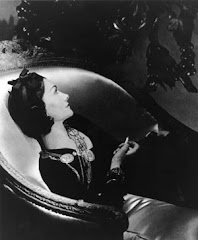
Katherine Whitehorn was the journalist who inspired me to be a journalist, when I was a teenager in the Sixties. Stylish, witty and intelligent, she was the model career woman.
Here she is returning to the Paris collections after a first visit in 1956 and recording the differences:
But just about everything else has changed since I was the Observer's fashion editor in the very early 1960s - let alone when I was flung into the job of covering the collections for Picture Post in 1956 because the only other girl on the magazine had left for the south of France with the sacked editor. Last week I was in Paris with the Observer's fashion editor, Jo Jones, and her deputy, Helen Seamons, to gawp and report on how different things have become.
The shows aren't, for a start, held in the same places. No more the silky, scented salons of the couture houses themselves, but an outside venue, which can be Lacroix on the entire ground floor of the Pompidou Centre (looks like a disused factory), or a vast black marquee in the grounds of the Musée Rodin (Dior), holding at least a thousand people sitting in stands as if watching football, the models emerging from a translucent wall like a medieval stained-glass window, with the "Raindrop Prelude" belting out at a volume loud enough to be the Hailstone Prelude. Or a huge room (Chanel) rumoured to have once been a bank, beautifully decorated with paper flowers, entirely in white, to look like the fairytale palace of the Snow Queen.
The models were always beautiful, but there are differences. Today's girls work for lots of houses, sometimes several shows in a day, up to 30 of them walking swiftly by in teetering shoes; they have to be more or less interchangeable, girls and clothes much the same size - which is nine feet high and four inches wide, with expressions that are always stonefaced and frequently sour. Models were always aloof, of course, but in Lanvin and Nina Ricci they were even sometimes allowed to smile. Back then they mostly worked for an individual designer and for far longer, not just the one show, and changed frantically in the cabine from one outfit to another. I remember Pierre Balmain praising one with pale hair and a white skin. "She is colourless!" he said - so he could design for her as on a blank sheet.
One difference that struck me right away was that everyone was taking photographs - not just a heaving bank of mostly male photographers at one end, looking like something out of Brueghel, but everyone else on their mobiles. In my day the couture houses were paranoid about secrecy, about the fear of being copied - which they constantly were, of course. You weren't even allowed to sketch, let alone photograph - one of my friends was barred from all the shows for doing so. "I drew in Dior," she wept. Which didn't stop commercial buyers having someone with a photographic memory race back to his hotel room and frantically draw - and I suppose I can admit, after 50 years, that once when I was stuck a friendly fashion chain let me have some of such pirated sketches for the Observer. There were embargoes and release dates, and magazines weren't even allowed to photograph the models until weeks after the shows; you had to choose the girls, choose the clothes and then come back for the actual photo shoot.

2 comments:
Nice article, even the most basic of mobile phones have excellent digital camera's
M. Balmain would love today's models, as well, if he enjoyed colorless.
Lovely writing.
Post a Comment